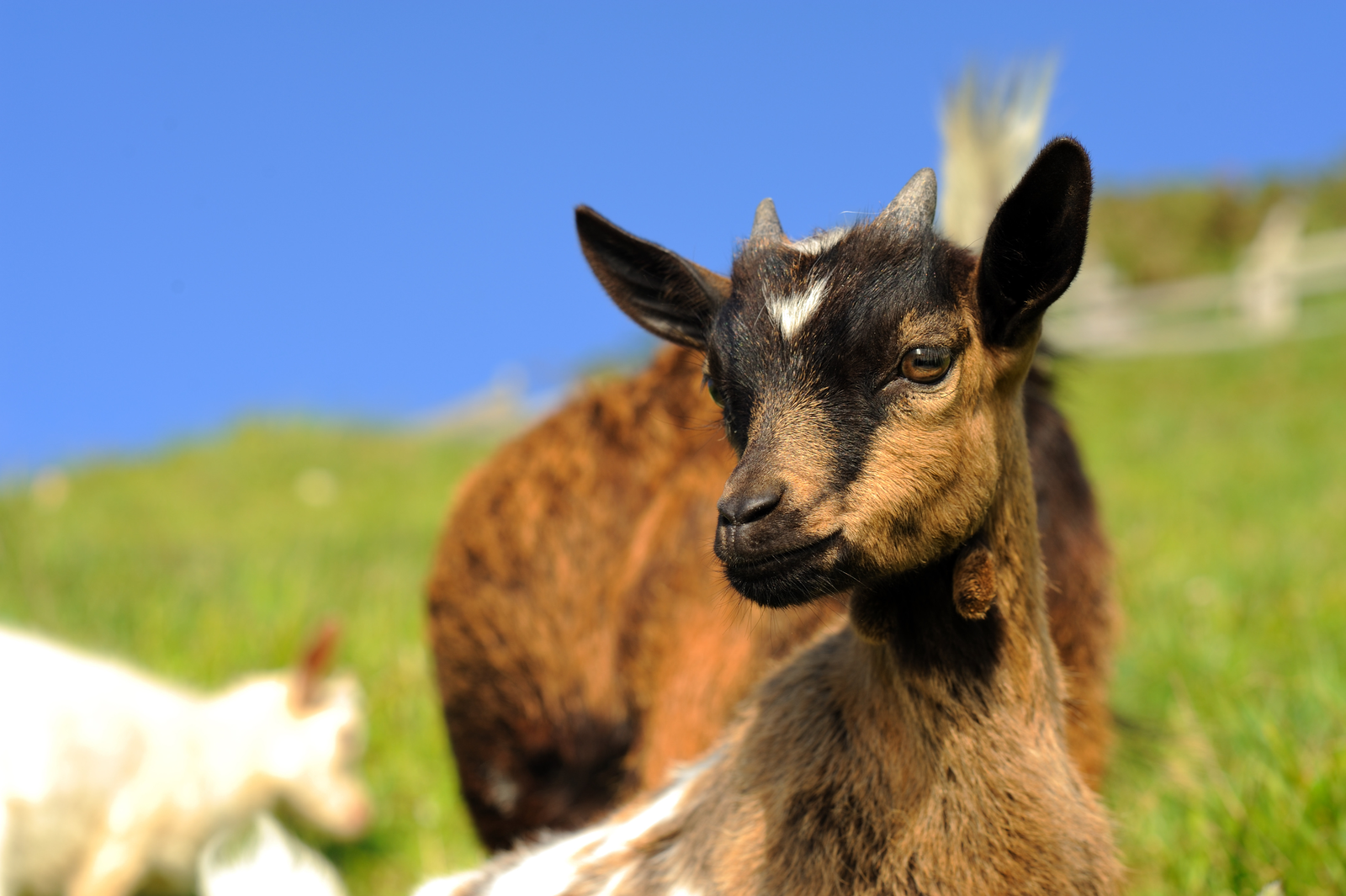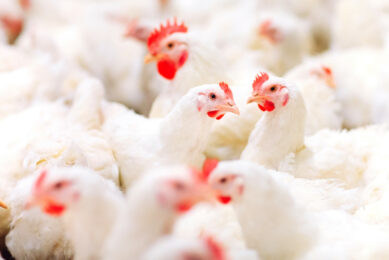Developing innovative yeast derivatives

Yeast products are known to benefit health and production of animals. The quest is now on the find a new generation of yeast fractions with optimised characteristics in terms of interaction with bacteria (pathogen binding) and modulation of the host immune system.
Yeast derivatives (inactivated whole yeasts or yeast cell walls) are well known for their benefits in animal and human nutrition and are mainly used to help balance the intestinal microflora and help stimulate the host’s natural defences. Most yeast derivatives on the market are by-products of the fermentation industry (for example, biofuel production), that is they are not primarily produced for this purpose. They are usually characterised according to their biochemical composition: level of mannan-oligosaccharides, yeast β-glucans or protein contents. If such an approach is interesting to evaluate product purity, it does not reflect their total functionality, for example their ability to bind to pathogens or stimulate immune pathways in the host.
Visualising the binding potential
Lallemand has invested to further delve into the relationship between composition and function of yeast derivatives with a view to select a new generation of yeast fractions with optimised characteristics in terms of interaction with bacteria (pathogen binding) and modulation of the host’s immune system. Cutting-edge techniques such as atomic-force microscopy (AFM) and single-molecule force spectroscopy (SMFS) were used to study yeast fractions. This made it possible to ‘visualise’ very precisely the yeast surface topography in terms of pathogen binding potential. It was shown that binding molecules were arranged differently depending on the yeast sample. For certain yeast strains, they are arranged as ‘sticky patches’. While in others, are scattered along the surface. In terms of functionality, the sticky patches show higher adhesive properties. This finding clearly shows that, while biochemical parameters are important, they are not sufficient to account for the functionality of a given yeast fraction. The distribution of these molecules along the cell wall is also very important. These studies demonstrate that all yeast strains do not share the same biophysical structure, or ‘ topography’. Using SMFS it was possible to measure the length of the polysaccharides chain: a characteristic linked to the binding capacity (the longer the polysaccharide chain, the better the binding potential). These findings also unveiled differences between yeast strains. Thus, yeast cell wall properties are linked to the strain, each strain exhibiting specific structure and functionality in terms of binding properties. Based on this knowledge, the single-molecule techniques were applied to screen different yeast strains and select the best candidates for optimal pathogen binding potential.
Importance of the production process
Another lesson learned from this research is that, for a given strain, binding properties can differ according to the production and inactivation process involved. Hence, for every selected strain, it is essential to determine the optimal production conditions: fermentation, but also the treatment of the live yeast to obtain the yeast fractions (inactivation technique). This cannot be controlled when yeast cell walls are the by-product of fermentation processes, since in this case the industrial processes are designed according to the primary production (e.g. priority to alcohol yield, etc.). When producing custom yeast cells, however, the production process for each strain can be adapted to reach the desired characteristics of the yeast derivative. Different stains from two different yeast species (Saccharomyces cerevisiae and Cyberlindnera jadinii) were selected for their complementary properties. For each strain, an optimal production process was developed. Once an optimal formulation has been designed based on in vitro studies, it was time to validate the model in vivo. A trial was performed to evaluate the aptitude of our new yeast derivatives product to mitigate pathogens presence in the intestinal tract of piglets. This study showed a significant reduction of E. coli contamination in faeces after a pathogen challenge (Figure 1).
Figure 1 – Effect of new yeast derivative formula on faecal E. coli excretion in challenged piglets.
(Schothorst Research Center, 2015).

Immune modulation
The selected yeast strains were also tested in vitro for their effects on the immune response. Certain parts of yeast cell walls are recognised by immune cells receptors. This interaction is known to stimulate immune reaction in the mucosa of the digestive tract. The most widely described and studied immune receptor is Dectin-1. Our study enabled us to evaluate, in vitro, the level of immune stimulation, using human immune cells (monocytes). Activation was measured as the production of reactive oxygen species (ROS) by these cells. The individual yeast strains selected as described above were tested in vitro. Yeast strains from the different species showed different levels of immune stimulation. Moreover, when mixed, the effects were not only additive but a synergistic effect was observed (Figure 2).
Figure 2 – Production of reactive oxygen species (ROS) by immune system cells incubated with different strains of yeast.

To go one step further in the understanding of the mechanisms involved, tests were performed using Dectin-1 antagonists. The results showed that Dectin-1 receptor was involved in the response, but that it was not the only pathway involved in the immune stimulation: the Cyberlindnera jadinii strain used other type(s) of receptor(s) as their action was not inhibited when the Dectin-1 receptor was blocked. Hence, this can explain the synergistic activity of both yeast types. Instead of over-stimulating the Dectin-1 receptor, the association of the different yeast strains offers a multi-pathway stimulation. While further research is necessary to identify the additional pathway(s) involved, our findings open up new possibilities and shows that formulating yeast cell walls is a complex task but a very promising approach to optimise their benefits. To date, a patent has been filed concerning the synergistic effect of our yeast extracts combination on the immune system. These immune properties demonstrated in vitro are also evidenced in vivo. When it comes to immunity and inflammation, it is all about balance. The objective is to maintain a delicate equilibrium between anti- and pro-inflammatory mediators. A study in seabass has shown a strong correlation between the use of the yeast derivatives formulation in feed and the expression of genes involved in the immune response (Figure 3).
Figure 3 – Expression level of inflammatory markers: proliferating cell nuclear antigen (PCNA), and Heat Shock Protein 70 (HSP 70) are significantly decreased when animals are fed with the yeast derivatives (Seabass trial, Plymouth University, UK, 2014).

Benefits in aquaculture
Based on this scientific approach, a specific yeast derivative formula has been developed and is now marketed (YANG, for Yeast Association New Generation). It can be used in all animal species. Trials performed in different species have shown that this formula is effective in helping animals face stresses, such as pathogen pressure, weaning or feed transition in a context of lower antibiotic usage. The first promising trials were conducted in shrimps. In recent years, outbreaks of early mortality syndrome/acute hepatopancreatic necrosis disease (EMS/AHPND) have caused major losses to the shrimp industry worldwide. Its causative agent was identified in 2013 as a specific pathogenic strain of the bacteria Vibrio parahaemolyticus. A trial was conducted in Vietnam in 2015 on juvenile white shrimps (Litopenaeus vannamei) subjected to a pathogen challenge. Survival rate of the shrimps fed the yeast derivatives was 3.9-fold higher than in the control group (12% survival in the control group vs. 47% in the supplemented group). Such a result is very promising to limit use of antibiotics and reduce the impact on the environment. In fish, significant immune and performance benefits were also highlighted at the field level. In seabass for example, in conditions of digestive stress (incorporation of high level plant-based raw materials in the diet – 40% soybean meal), zootechnical performance of individuals fed the diet supplemented with the yeast derivatives product are significantly improved (Table 1). This can be linked to a noticeable positive effect on gut morphology: the density of microvilli of the intestinal wall is increased, and a significant difference has also been observed in the length of microvilli and gut perimeter. Hence nutrient absorption is optimised, which could be linked to improved feed utilisation.
Application in young livestock
Trials in post-weaning piglets have shown benefits, particularly in the context of antimicrobial withdrawal in feed: improved faeces aspect, absence of diarrhoea despite challenging conditions (antibiotic and high dose zinc oxide withdrawal). Those benefits were reflected by an improved feed conversion ratio: 2.5% improved during the post-weaning period, up to 4.3% increase in the starter phase in absence of zinc oxide (commercial trial, Hungary, 2015). In young ruminants, commercial trials in calves, goats or lambs have also proven benefits on immunity and performance at time of digestive challenge, such as weaning. For example, kid goats, which are very sensitive to digestive problems and disease challenges at weaning, have shown higher body weight gain, especially in challenging conditions (diarrhoea): average daily gain was improved by 9% in mid-challenging conditions and up to 11.9% in high challenging conditions (high diarrhoea incidence) (commercial farm, France, 2015). In calves, similar trends were shown: a Spanish trial performed in a commercial farm (2014) showed that the yeast derivative supplementation helped improve average daily gain by about 50 g/day during the pre-weaning adaptation phase and around weaning. This is mainly explained by lower morbidity levels shown during this stressful period. The percentage of animals treated at least once with antibiotics is reduced by 39%, and animals treated for diarrhoea reduced by 70%. In addition to better growth performance, investigators measured a decrease of a biomarker of inflammation (haptaglobin). Users repeatedly notice improved pen homogeneity in those young animals. In conclusion, the use of an original, single-molecule microscopic-based approach to yeast strain selection and yeast derivatives development has led to a new generation of yeast derivatives, with promising applications at a time when increased pressure is put on the feed industry to reduce the use of antibiotics in feeds.
References are available on request.













